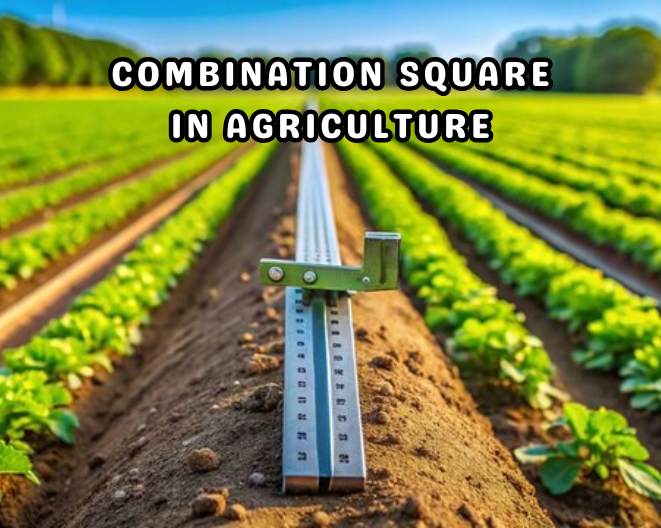Agricultural education is a field dedicated to teaching students about farming, food systems, natural resources, and animal science. It’s an essential area of study that impacts food production, environmental sustainability, and rural communities across the United States. But unlike traditional subjects like math or history, agricultural education comes with its own unique challenges and grading criteria. This article explores the methods and principles of “how is the agricultural education scored in the USA”, extending far beyond simple grades and test scores.
Understanding Agricultural Education in the USA
Agricultural education encompasses a wide range of programs at the high school, community college, and university levels. Programs are often broken down into three main components:
- Classroom Instruction: In-class coursework covering subjects such as plant science, animal husbandry, soil health, and agribusiness.
- Supervised Agricultural Experiences (SAE): Hands-on learning through projects or internships where students apply their skills in real-world scenarios.
- Future Farmers of America (FFA) Involvement: Participation in FFA, a student organization that builds leadership, communication, and agricultural skills through events, competitions, and community involvement.
Because of its practical nature, agricultural education is not easily evaluated with conventional exams alone. Scoring in agricultural education requires a balanced approach, considering both theoretical knowledge and practical application.
Also read: Agriculture Extension Officer: Roles, Responsibilities, and Importance in Farming Communities
Key Components of Scoring Agricultural Education
In the USA, agricultural education is scored based on multiple facets, blending classroom performance, project-based learning, practical skills, and community engagement. Let’s break down some of the core components used in scoring these programs:
1. Classroom Performance and Exams
Classroom instruction forms the backbone of agricultural education, with students learning fundamental concepts of crop science, animal management, food systems, and environmental stewardship. The performance includes:
- Written Exams: Often multiple-choice or short-answer exams that test students’ theoretical understanding of agricultural topics.
- Homework and Projects: Assignments related to current agricultural issues or case studies allow students to analyze real-world scenarios.
- Participation: Regular class engagement, attendance, and contributions are the main factors in scoring. Students must stay active, ask questions, and participate in discussions.
Despite this classroom foundation, exams in agricultural education typically only account for a portion of the overall score, as hands-on experience plays a significant role in student assessment.
2. Supervised Agricultural Experiences (SAE)
The SAE component is a crucial part of agricultural education, encouraging students to apply classroom concepts in practical settings. SAEs are student-designed and can vary widely in scope, from animal care to running a small business.
- Types of SAEs: There are four main types of SAEs:
- Exploratory: Activities that help students explore agricultural career paths.
- Research: Scientific research projects related to agricultural topics, such as plant genetics or pest control.
- Entrepreneurship: Students create and run their agricultural businesses, often involving crops, livestock, or landscaping.
- Placement: Internships or job placements where students work in real agricultural settings, gaining hands-on experience.
- Scoring SAE Projects: Students’ SAE project scores are based on criteria such as project planning, execution, time management, and learning outcomes. Students maintain detailed records of their activities, budgets, and achievements, which educators review and can factor heavily into their final grades.
3. FFA Participation and Leadership Development
Participation in the FFA must encouraged as it builds essential skills beyond those taught in the classroom. The FFA organizes events and competitions where students demonstrate agricultural knowledge, compete in team challenges, and showcase leadership skills. Scoring for FFA involvement includes:
- Competition Results: FFA competitions, known as Career Development Events (CDEs), include everything from livestock judging to public speaking. Success in these events is often in a student’s overall agricultural education score.
- Leadership Roles: Students who take on roles like chapter president or team captain receive additional recognition. Leadership scores focus on students’ abilities to manage projects, lead discussions, and mentor peers.
Participation in the FFA often constitutes a significant portion of a student’s overall score, as it emphasizes leadership and communication skills crucial for career success.
The Role of Rubrics and Assessment Tools in Agricultural Education
To evaluate these diverse components fairly, many agricultural educators use detailed rubrics and assessment tools. A rubric is a scoring guide that lists specific criteria and provides descriptions of performance levels. Rubrics in agricultural education can include:
- Knowledge and Comprehension: Understanding basic concepts and information.
- Application and Analysis: Ability to apply concepts in practical situations.
- Skill Proficiency: Mastery of hands-on skills like handling livestock or using farm equipment.
- Professionalism and Work Ethic: Punctuality, consistency, and the ability to work independently.
Rubrics ensure transparency and fairness, helping both students and teachers understand the expectations and grading standards.
Standards and Frameworks Shaping Agricultural Education Scoring
How is the agricultural education scored in the USA? The answer follows the guidelines developed by the National Council for Agricultural Education and local education departments. These standards provide a framework for assessing students, often focusing on:
- Technical Skills and Knowledge: Skills specific to agricultural practices, like soil sampling or animal nutrition.
- Personal and Career Development: Emphasis on communication, problem-solving, and ethical decision-making.
- Civic Responsibility: Involvement in community service projects that highlight the role of agriculture in society.
The National Agricultural Education Standards also encourage educators to include soft skills—like teamwork and adaptability—as part of the grading criteria, preparing students for the complexities of agricultural careers.
How Technology is Transforming Agricultural Education Scoring
With advancements in educational technology, scoring in agricultural education is evolving. Some of the tools making this transformation possible include:
- Digital Record Books: Students use digital platforms to record SAE project details, track progress, and compile financial information. Teachers can access these records in real time, providing immediate feedback and ensuring all aspects of a project during the assessment.
- Online Testing: Platforms for quizzes, exams, and assignments allow for a more interactive experience. Online testing can include real-time updates on scores, allowing students to track their progress instantly.
- Simulation Software: Some agricultural programs use virtual farm management simulators, allowing students to experiment with crop rotation, soil health, and livestock care. These simulations provide a controlled environment for scoring practical knowledge.
Also read: Agricultural Revolution: Impact Of Technology On Agrarian Transformation
Balancing Subjectivity and Objectivity in Scoring
Scoring agricultural education requires balancing objective measurements (like test scores) with subjective assessments (such as project quality). This balance is crucial for fairly assessing students’ abilities and efforts. Educators must have training to recognize and evaluate intangible skills like leadership, problem-solving, and critical thinking. They consider both a student’s performance on objective tests and their dedication to hands-on projects when determining final scores.
Conclusion: Agricultural Education Assessment Goes Beyond Grades
How is the agricultural education scored in the USA? It is a holistic process that goes beyond traditional grades. There is a comprehensive scale for evaluating students by incorporating classroom performance, hands-on projects, leadership activities, and community involvement.
Agricultural education programs aim to equip students with practical skills, critical thinking abilities, and the leadership qualities needed to succeed in the field. By evaluating students on multiple dimensions, educators ensure that agricultural education is more than just a course—it’s a stepping stone to a sustainable and rewarding career.





